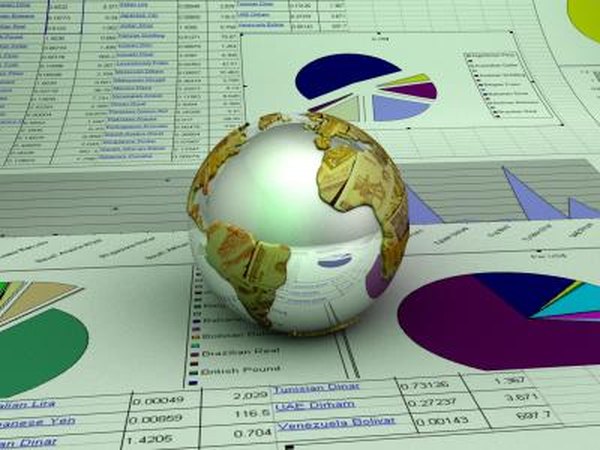Computer Programs to Help Invest in Stocks
Start by using a spreadsheet to build a simple balance sheet summarizing your investments.
Jason Reed/Photodisc/Getty Images
Although it is not mandatory to use a computer to manage your stock investments, technology for this purpose has become so common and user friendly that there's no reason not to. Computer programs can be used as simple tracking tools to track diversification or to provide analysis by asset class. Or you can use more advanced screening tools if you are interested in individual stock selection. If you want to learn the basics of more complex types of trades, you have no choice but to use a computer.
High-End Offerings
At the top of the market for computer-generated analysis sit the undisputed leaders in trading and analytics software, including Bloomberg Analytics, FactSet and CompuStat, Capital IQ and Thomson Reuters’ Eikon software. These packages are expensive, often costing more than $20,000 per year in licensing fees. But these tools give you access to essentially every piece of information that is publicly available about a company, as well as countless screens detailing historical performance and comparative results. And you can integrate the software with spreadsheets to build your own models using information imported from a company's data. These options come with customer support; these software makers will even send their own experts to your location to help you customize your models.
Financial Software Packages
A quick Google search will reveal numerous, relatively inexpensive versions of financial software for every methodology taught in business school. Many are available online at no cost. However, for relatively little amounts of money -- hundreds, not thousands, of dollars -- you can purchase software that performs complex risk management and pricing functions. The number of uses for various types of software are limited only by your own creativity.
Spreadsheets
Unless you are familiar with at least one programming language, spreadsheets are the most useful tool. They are incredibly flexible, dynamic and easy to customize. Spreadsheets are most useful when combined with another data source, such as market data. You can use them to create real-time screens by any metric and to perform a complex relative analysis. You can also use them to create simple financial statements such as balance sheets and daily cash flow statements for your holdings. The best thing about spreadsheets is that you can continuously add to them. They include an impressive database of formulas and functions.
Access Tools Through Your Brokerage Account
Most brokerage firms, including discount online brokerages, provide clients with access to excellent retirement planning programs that allow you to analyze various scenarios based on different asset allocations over time. They also typically provide stock screening tools that are real time and perform roughly as well as the screens performed by the high-end software packages. These tools are free, although you may have to pay a small fee for premium access to additional online software tools. Because they are integrated with your portfolio, they allow more relevant analysis.
Algorithmic Trading
Retail investors now have access to algorithmic trading through the relatively new niche market of inexpensive algorithmic software packages tailor-made for individual investors. These are generally web driven and require little to no knowledge of coding or programming. Retail traders can mimic institutional algorithmic and high-frequency traders’ strategies on a smaller scale by using less capital. Examples of these software packages include Rizm and Quantopian.
References
Resources

